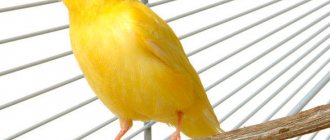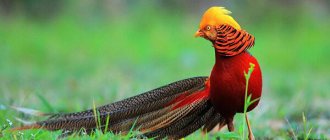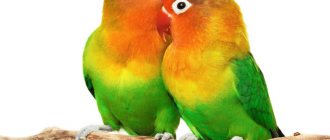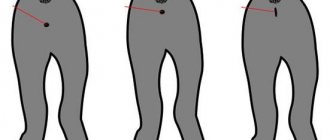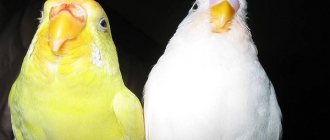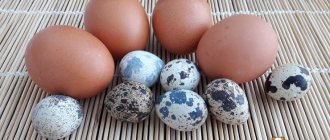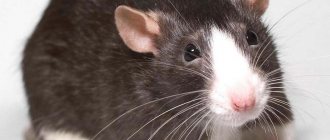The age of the chicken is extremely important. It is important not only for identifying the peak of poultry productivity, age plays a huge role when breeding chickens, when old ones are discarded and new ones are bought.
To avoid getting into trouble, you need to know the criteria by which the age of a laying hen is determined. The stock is usually renewed at the age of 2.5 - 3 years, this allows maintaining a good productive level.
The age of the newly arrived chicken should not exceed 1 year. A number of methods are used to accurately determine age. It is better to use them in combination, then the error will be smaller.
When determining age using only one criterion, it is very easy to make a mistake. So, how to determine the age of a laying hen? Let's highlight the main points.
Why is the age of a chicken determined?
As stated above, this is necessary to calculate the overall productivity of the bird. Additionally, information about the age of the bird allows you to:
- correctly form a breeding herd;
- make an assumption about the quality and quantity of future eggs;
- predict feed costs before slaughter;
- determine the cost-effectiveness of maintenance.
Layers that are at the peak of their production benefit the most. Such chickens are usually from 1 to 2 years old. When purchasing birds from a poultry farm, you can definitely find out their age. It's more difficult when it comes to buying secondhand.
You can determine the age category of a chicken by its appearance and behavior. In order for the result to be closer to the truth, it is advisable to know the breed characteristics and be sure that the bird is purebred. If, for example, the owner got a ready-made chicken coop with laying hens of unknown years, their age can be calculated by egg production and egg quality. Again, it is important to consider the breed, because birds of the meat, meat and egg and egg lines lay differently.
Such methods make it possible to determine the date of birth of a bird with an accuracy of up to 1 month.
Signs of a good duck
It’s not difficult to recognize a good laying hen; just observe the behavior of the hen. Laying hens with excellent productivity do not sit in one place. They are the first to run out of the chicken coop and spend the whole day walking around the yard, digging, looking for larvae and bugs. Young chickens cackle. They enter the coop late and most often have to be corralled.
Weak birds look for a place to sit. They are often located in the shade, somewhere under a tree or in the corners of the chicken coop and sit, waiting for the night. To more accurately determine the productivity of a chicken, various methods of external detailed examination are used.
How to examine a chicken to determine its age
It is better to do this after the hen has recovered from molting. When assessing the external characteristics of a bird, it is worth knowing that a young and highly productive bird:
- the feathers are smooth, rich in color, undamaged, tightly fitting to the body;
- eyes are clear, shiny, not sunken;
- the scallop is developed, bright, fleshy and warm;
- under the wings the down is soft and long, evenly distributed;
- the skin on the legs is smooth and even, with tight-fitting, shiny scales, without cracks or new growths;
- the claws are even, not too long and sharp, without signs of delamination. Excessively grown can indicate a sedentary lifestyle of the bird, for example, due to being kept in a cage, or mean old age;
- the skin is thin, slightly pinkish, covered with down, with barely noticeable veins. Old laying hens have little fluff, and the blood vessels are clearly visible.
The plumage must be well-groomed and clean. Dirty and sticky skin does not indicate age, but does indicate health problems. This bird is not worth buying.
Pigmentation of young and old laying hens
There are other features that indicate how to distinguish the age of a chicken. For example, this can be done by color intensity (pigmentation):
- feathers and legs;
- irises;
- beak.
The “dress” of a young bird is always of a rich shade. If it looks faded and faded, the hen is an old lady. The same applies to the iris - a “faded” eye speaks of a great deal of life experience. The scales on the legs of the juveniles are bright yellow, as is the beak. If they are whitish or have a gray tint, this is an older bird. The same applies to the skin of the body. With age, it turns pale, and the first signs of aging appear around the cloaca. If the hen has “faded,” it means she has already worked a lot.
It should be borne in mind that diet also affects pigmentation. If the chicken was fed corn grain and/or yellow pumpkin varieties, a large amount of xanthophylls may accumulate in the body, which gives yellowness to the skin and even the iris. When the bird is actively laying eggs, most of this pigment is excreted with the eggs. In an old laying hen, with declining productivity, it is preserved, so it can be confused with a young individual.
Weight and physique
When selecting young animals for breeding, one should take into account the weight and body constitution. So:
- young chickens are lighter and softer in body, while aging chickens are dense and strong;
- The chest part of the “old women” is solid, with a slightly protruding keel. In pullets it is soft and round;
- The abdomen of highly productive individuals is soft, without compactions and thick fat folds. In aging people it is dense and heavy;
In addition, a young, healthy bird is alert and active. She is always on the move and looking for food, she goes out for a walk first and is the last to enter the barn. Such chickens walk a lot, dig in the ground or litter, and when the owner appears, they run to the feeder.
Features of molting in pullets and adult chickens
The young hen molts closer to mid-autumn - later than the old one, but grows feathers faster. A fresh coat is formed by 40-55 days. The old one can enter the winter molt at the beginning of August, and stay there for 3 months.
True, too early molting can be caused by sudden and frequent changes in diet, as well as health problems.
Why is this necessary?
Age determination is a fairly important factor in poultry farming. Chickens have a life expectancy of 10 years or more, but they retain the ability to lay eggs for 5 years.
Often, unscrupulous sellers, playing on the farmer’s inexperience, can sell him a batch of mature laying hens instead of pullets.
The ability to determine the age category of livestock will also be needed if you have a large farm. Here it is very difficult to track the age of a particular bird, and keeping hens that do not lay eggs is a waste of not only money, but also the owner’s efforts.
Chickens at home
Worth knowing. On a home farm, if possible, it is worth using separate housing for young and adult birds. In such conditions, there will be no questions about the age of the chickens, and at the same time, conflicts in the herd will be reduced. Often adult birds, in particular males, chase young chickens and do not allow them to eat normally.
Determination of age using a technological method
This method is based on monitoring the intensity of clutches, as well as assessing the quality of eggs. Having figured out how to find out the age of a chicken, you can use the technological method even in a small home chicken coop.
You can determine how young a hen is by the number of eggs. When the bird is fresh and healthy, it lays eggs on average 4-5 times a week. This happens less often in older chickens, but much depends on the productive direction - representatives of meat breeds produce the minimum number of eggs. The disadvantage of this method of determining age is that it is extended over time.
In large poultry farms, egg production is assessed using individual and collective indicators. In the first case, laying hens are placed in individual cages, and in the second, the number of eggs laid by the entire flock over a period of time is counted.
A young bird produces eggs:
- small;
- weighing about 45 g;
- with large yolk;
- excellent taste.
The older the individual, the larger the product and the less taste and benefit it contains.
In eggs obtained from:
- pullet, hard and durable shell, and the yolk is quite dense, orange in color;
- aging chickens, the shell is fragile, so it can easily be broken by a careless touch on a hard object. The yolk is pale yellow, runny;
It is better to purchase six-month-old pullets in the spring, so that in the summer, due to the abundance of light and fresh grass, they produce a rich harvest of eggs. What happens next with productivity is largely determined by the breed. Some varieties retain it at a high level until the age of two, but hybrids older than a year bear worse.
At poultry farms, the flock is often renewed, and chickens that have lived for more than 2 years are put under the knife. That is why the risk of acquiring elderly laying hens on such a farm is minimal. In addition, the livestock is vaccinated in a timely manner, lives and reproduces under strict veterinary control.
Egg quality definitions
Another criterion by which the age of chickens is determined is the quality of egg products.
- The pullet lays eggs with hard shells that are difficult to break. This is due to the genetic desire of the body to preserve its own kind. Old hens lay eggs with thin
It will be useful for you to knowIs it possible to drink raw chicken eggs: benefits and harms, recommendations for eating the shell, which is easy to crush with your hands.
- The first egg production, laid when the hen reaches sexual maturity, is 30–40% smaller in size than the eggs of a fully formed hen. These eggs are called “chicken eggs”. Typically a pullet lays 12–18 chicken eggs. They are suitable for use as food, but should not be placed in the incubator.
- The first production may come out bloody - this is normal for a chicken under one year of age.
- During the first year of oviposition, eggs weigh 8% less than in the next year.
- The color of the shell depends on the color of the laying hen's feathers. Light individuals carry white eggs, while dark and golden ones carry brown eggs.
- The color of the yolk will depend on the hen's diet.
Did you know? In America there is a unique breed of Araucana chickens, which produces eggs colored bluish-green.
How to “rejuvenate” chickens for sale
There are ways to pass off older laying hens as young ones. It was mentioned above how pigmentation of the integument and iris increases with the help of a “yellow” diet. Apart from external changes, no metamorphoses into the poultry’s organisms occur, so the visual effect is not designed to improve the condition of the chicken, but to deceive an inexperienced poultry buyer.
Forced molting is a completely different matter. This is an artificial change in plumage, which is caused by:
- creating stressful conditions such as hunger, short daylight hours and lack of water;
- the use of hormonal and other drugs that suppress ovulation in females.
The onset of express molting is faster than usual, seasonal, and gives amazing results. Chicken with fresh feathers:
- looks beautiful and cheerful;
- carries well;
- produces larger eggs.
The method of forced cover change allows increasing productivity from declining to record. By using it a second time, you can achieve the same result again for 6-8 months. Miracle chickens are usually not sold, and if they are sold, it is in the last months of peak egg production. A new owner who wants to immediately get an adult and productive bird will be incredibly pleased with the abundance of large eggs. However, when after 1-2 months the hen begins to “fade out”, he will realize that he overpaid.
Verification methods
Some poultry farmers have heard how to determine the age of a chicken by its comb or beak or legs. By external signs you can find out the approximate age of the bird. To determine it more or less accurately, it is recommended to use several methods of determining age at once. This is due to the characteristics of the breeds.
So how can you determine the age of a chicken by its appearance? There are several ways to find out how old the cushet is. They are listed below:
- Definition by belly.
- Age detection by comb.
- Determination of age by activity.
- Years of life and the condition of the beak and paws.
- Determination by weight.
Each definition method has its own characteristics. Beginning farmers are advised to know how to determine the age of a chicken in different ways.
Poultry house rejuvenation methods
Poultry farmers have developed several methods to maintain egg production at the proper level:
- Carry out culling of laying hens that have reached the age of 2.5 years. It is more advisable to use mature individuals for culinary purposes.
- You should buy chickens in the spring. This measure will help to obtain products with the onset of autumn, when “outdated” specimens are culled.
- If it is not possible to purchase new livestock, you can rely on your own production. For this you will need roosters. At the rate of 1 male per 10 females, as well as competent hens with a well-developed maternal instinct. The presence of responsible mothers in the chicken coop will make the process of raising chickens easier, since the burden of care falls on the shoulders of the laying hens.
It is necessary to take a closer look at the behavior of birds: young individuals move more, and they also have an elegant skeleton. The old-timers of the chicken coop are distinguished by a calm, phlegmatic disposition and do not show much participation in yard affairs.
A little history
Today, chickens are one of the most famous poultry. They were domesticated first. The ancestors of domestic chickens are considered to be wild bush chickens, whose homeland was Southeast Asia.
This is the most common and numerous poultry.
Initially, people were captivated by the fighting spirit of these birds. They began to be kept for entertainment cockfighting. In the beginning, no one thought of keeping chickens for economic purposes.
It took some time before these birds were used to produce tasty meat and healthy eggs.
Different varieties of chickens began to appear. People began to breed both meat and egg species.
Chicken meat contains a lot of protein and amino acids, eggs are easily digested by the body.
Domestic chickens are unpretentious and low maintenance. They are easy to keep at home
The most important thing is to provide them with a warm place and regular feeding.
Grain can be used as feed. Free-range chickens are also allowed, in which they can eat worms.
Palpation of the abdomen
To implement this method, you will need to firmly hold the chicken in your hands and feel its belly.
Older individuals are distinguished by their rounded abdomen, which is hard to the touch. This indicates that the area around the abdomen is overgrown with fat and the muscle tissue is stiff. All these negative processes begin in the chicken’s body only after two years of age.
If a young chicken comes into your hands, its stomach reacts to pressure - it contracts under pressure.
During the manipulation, do not forget that there is a fragile egg inside the hen, which can be crushed if pressed hard. Therefore, movements should be as careful as possible.
Beak condition
Another simple way to determine the age of a laying hen. In chickens under 12 months of age, this part is always yellow and smooth, without bumps or rough areas. It also has a good grip and a slightly curved shape.
Over time, the beak turns gray and dark pigmentation appears on it. Chips and scratches appear on the beak, some so deep that they turn into small cracks.
The surface of the beak becomes dull; it seems that the upper film is moving away from the beak.
This parameter helps to determine the age of the chicken both at the time of purchase and when choosing birds for slaughter, which are characterized by poor productivity or its complete absence.
Interesting Facts
To find out to what age laying hens lay eggs at home, you should know some interesting features:
- In a healthy laying hen, productivity can be determined by plunging your fingers into the cloaca. To do this, use a glove and Vaseline. If 3 fingers fit, then the chicken is at the peak of its productivity. If less, the number of clutches decreases.
- To keep the chicken coop clean, special ultraviolet lamps are used.
- Record holders in the field of poultry productivity are representatives of the Czech dominant breed. Young individuals begin to lay eggs at the age of 3 months.
Many farmers note that birds lay eggs between 7 a.m. and 3 p.m. Therefore, during this period the bird should be at rest.
To obtain eggs, it is necessary not only to choose the right breed of birds, but also to provide proper care. The nutritional value of the diet and the cleanliness of the chicken coop are of great importance. If the productivity of hens decreases, it is necessary to cull and replace old laying hens with young ones.
By molting period
The molting period of young birds differs from the molting period of older birds in duration and start time. Older hens molt for 3 months from July. Young, productive laying hens enter this phase in late September or early October, when daylight hours decrease. This process, which lasts 40-55 days, can be caused by artificially changing the lighting period and changing the diet, which makes it possible to obtain products as early as late October-early November.
First, the plumage changes on the neck, then on the back and body. When the wings molt, symmetry is maintained: the axillary flight feathers, then the middle and outer edge of the wing. You should remember the difference at the beginning of the molting period, so as not to leave already beautiful old hens instead of moulted young ones.
At this time, the diet should contain a lot of sulfur and be balanced according to other criteria. Adding peas, mustard seeds, dairy waste and a variety of root vegetables helps the molt proceed safely and quickly. If this process begins too early, then it is necessary to take a closer look at the wards, as this may indicate illness or deficiencies in nutrition and maintenance.
Time-tested varieties
They have been successfully grown for many years in a greenhouse and consistently produce a rich, high-quality harvest. Each has its own characteristics, which must be taken into account before planting.
Remontant high-yielding variety with large sweet berries. The variety is intended for protected ground. The main advantage is that the culture tolerates transportation well. If agrotechnical standards are met, about 2 kg of crop is harvested from each Evi bush.
Can be grown in open ground. The variety is highly resistant to one of the biggest scourges for all varieties kept indoors - gray rot. The culture is not afraid of temporary increases in humidity and decreases in temperature, and does not deteriorate during transportation. The fruiting of the variety is not the highest. From a bush you get about 500 g of sweet and sour berries.
An early ripening variety with tasty conical berries. Like most varieties grown in protected ground, it tolerates transportation well. It can be kept in unfavorable conditions for a long time, but it yields 1.2 kg from each bush only if all cultivation rules are followed.
Elsanta
On average, it produces about 1.5 kg of medium berries from each bush. It has excellent taste, but is demanding to care for. These strawberries can only be kept in a heated greenhouse, since they may die during frost. With the exception of low temperatures, the variety almost never gets sick and is not affected by pests.
Octave
Fruits well in closed ground conditions. The berries have a wonderful aroma and excellent taste characteristics. The early-ripening variety tolerates low temperatures well, so a short absence of heating will not lead to the death of the bush, and it is also resistant to many pests.
Sonata
Dutch variety with large aromatic dessert berries. Excellent resistance to powdery mildew and gray rot. Has proven itself well in greenhouse conditions.
Darenka
A non-repairing, early-ripening variety, bred by Russian breeders for planting in protected soil. The culture is resistant to almost all diseases. Sweet berries with a characteristic strawberry taste ripen on the bushes.
When they start rushing
Having decided to start breeding laying hens, you also first need to deal with another important question: when do they start laying eggs?
It must be remembered that these birds belong to the egg breeds. Those, in turn, were bred specifically for early and long-term egg production. Accordingly, such breeds, under the right conditions, should begin to lay eggs for up to 6 months. To be specific, most breeds begin laying eggs at the age of 4.5-5 months. This time also depends on the conditions of detention and the length of daylight hours. Therefore, in winter, additional lighting is needed for optimal performance. Unfavorable conditions can delay the start of wear for a month or even a month and a half, which may not have a very favorable effect on business.
Live weight
In chickens, body weight increases with age. But using this measurement method is not always convenient, since when weighing you need to familiarize yourself with the average statistical parameters of the breed of your laying hens.
If you buy chicken at the market, relying on this method will not be possible, since you will not be able to weigh the bird.
But if you have laying hens of different ages on your farm and you are absolutely sure of the age of at least one hen, you can measure its body weight and then be guided by these indicators.
But it is worth considering that in each brood there are individuals who lag behind in their development and never recruit in accordance with the norms. Therefore, when weighed, they will appear to be young layers.
REFERENCE! Egg hens at six months of age have an average body weight of 1.5 kg.
Type of scallop
This option will not help determine the exact age, but it will tell the farmer whether the bird has lost its productivity. The pigment that is responsible for coloring the shell and comb with lobes is common to chickens. Therefore, its decrease in the body becomes noticeable in external characteristics.
In breeds that are highly productive, the comb is often highly developed and hangs to one side.
In young productive chickens the comb is bright and red, but in older birds it turns pale.
You can determine the age of a laying hen by the temperature of the scallop. Old chickens have poor blood circulation, which is why their combs are colder. In young productive birds this part is warmer.
Remember: the brighter the comb, the more strength and health the hen has in her body. This indicates long-term productivity of the bird.
